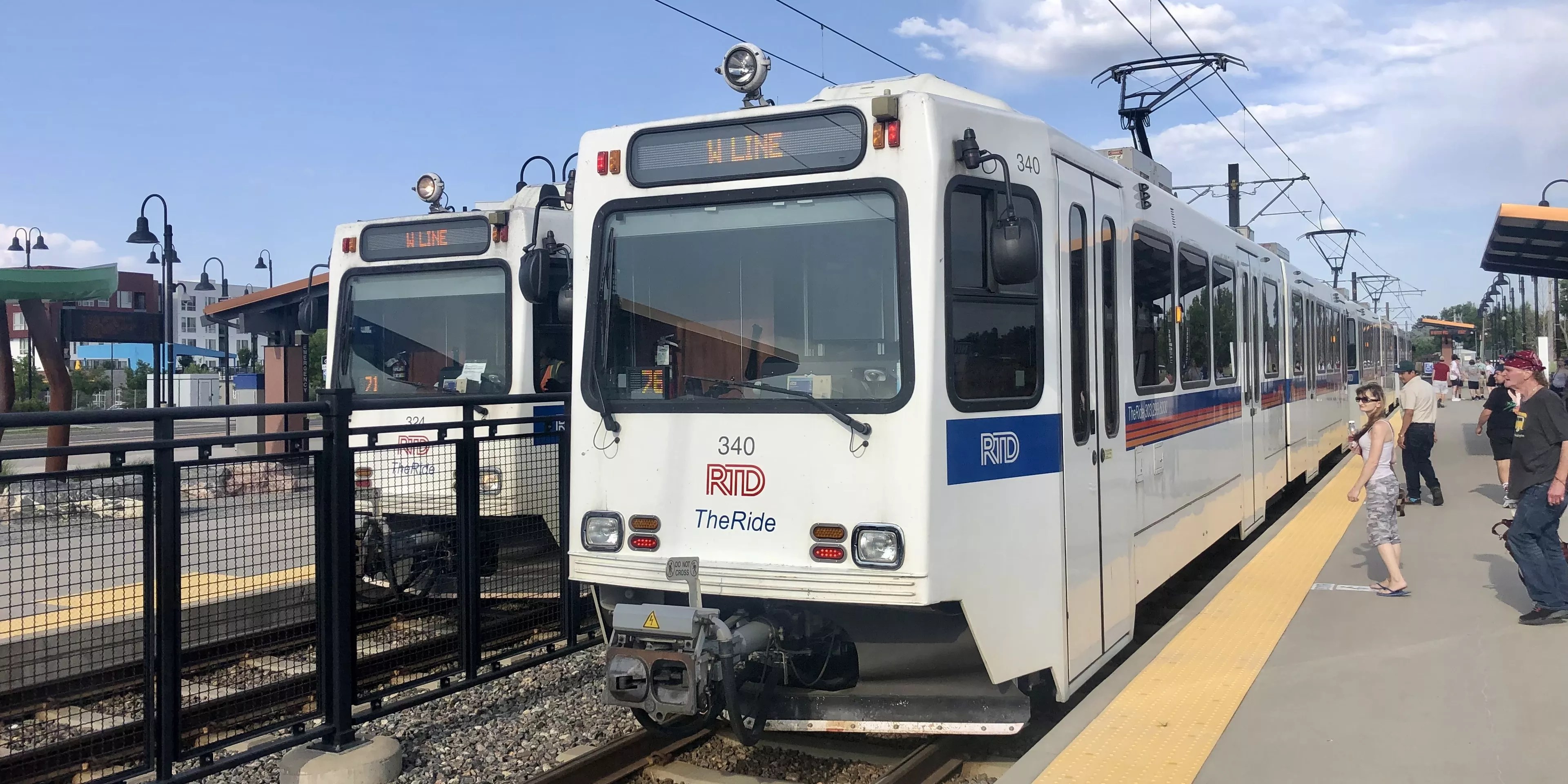
Courtesy of RTD

Audio By Carbonatix
Although it seems like the price of just about everything is higher these days, fares across the Regional Transportation District’s entire system are bucking the trend and actually dropped on January 1.
“This is the first time in our agency’s history that we have lowered fares across the board,” says Stuart Summers, chief communications and engagement officer at RTD. “We know that this is going to be a big win for all of our customers in the community.”
The change was inspired by a year-long study that indicated fares needed to be simpler and more affordable; the agency had solicited customer feedback as well as commissioned the study. The across-the-board fare drop was approved by the RTD Board of Directors in July.
“Where we’ve arrived, truly, is a well-thought-out solution for our fare structure,” Summers says.
Fares are now $2.75 for every route except the light rail to Denver International Airport, which costs $10. Previously, fares were $3 for local trips and $5.25 for regional trips; an airport ride ran $10.50.
“What people will notice is that they don’t have to try and decide, am I going local fare, regional fare? How far a distance am I traveling? Do I have the right fare to do that?” Summers explains. “We really wanted to simplify that. … You could go all the way from Longmont down to Parker and you could do it all on the standard fare.”
Monthly passes for all riders are $88 and include airport trips. Previously, local monthly passes were $114, and regional passes that included airport trips were $200. (Those who purchased paper tickets before the price changes can exchange unused ticket books from 2020 through 2023 for the amount of tickets they would be worth under the new fares through the end of January, either by mail or at RTD sales outlets.)
RTD also combined all of its discount programs – the LiVE Income-Based discount program and those for people 65 years or older, those on Medicare and people with disabilities – into one fare structure as another part of its goal of simplicity. Qualified riders now pay $1.35 per ride, $2.70 for a day pass and $27 monthly. Before, each group paid different rates that were all higher than the new prices.
Access-a-Ride fares also got lower, and now cost $4.50 for one-way standard fares without any regional travel and $19 to the airport. In March, the 50 percent discount for LiVE customers will become available for those who also use Access-a-Ride.
“One of the things we heard overwhelmingly throughout this entire process was that one of the barriers for people using the system was not understanding the fares,” Summers says. “People felt intimidated by it.”
Through its Zero Fare for Better Air program, the agency learned that if rides were free, people would try using transit because they had no fear of using the wrong ticket. RTD is banking on the fare structure without regional zones creating new customers because fewer people will have those concerns, according to Summers.

Prices are at least 25 cents less now than they were in 2023.
RTD
In a May community meeting about the then-proposed new fares, the agency said that its models indicated $2.75 was the lowest it could go for most rides without risking cutting down on services. Fares account for 6 percent of the current RTD budget; under the new fee structure, RTD expects that percentage could decrease to 5 percent. The system is mainly funded through a 1 percent sales and use tax that was originally approved by voters in 1973 as a 0.5 percent sales tax and has evolved since.
“Fare revenue has been adjusted downward to $63.9 million,” RTD’s 2024 proposed budget notes. The total budget for operational expenses is proposed as just under $1.048 billion.
RTD uses the fare money to help hire and retain bus and rail operators and support the cleaning of trains, buses, stops and stations, according to Summers.
“It is a small amount when you talk about percentages, but it’s still an impactful amount that allows us to deliver on our mission of providing transit services,” he adds.
The agency anticipates that low-income customers will realize a 22 to 23 percent fare decrease, since it targeted the changes to create a more equitable system.
On January 7, RTD implemented its tri-annual schedule and service changes, returning the E and H light rail lines to fifteen-minute service frequency and altering many other local and regional routes (check out the changes on the RTD website).
Since September, children under nineteen have been able to ride for free; that program will continue in the new year. “If we can provide youth with transit to go to school, go to activity centers, maybe their part-time job, and access services in the community, hopefully they’ll become lifelong customers of RTD,” Summers says.
“We recognize that a lot of people use RTD,” he concludes. “We want to make sure that we’re here to serve our customers in the entire community.”